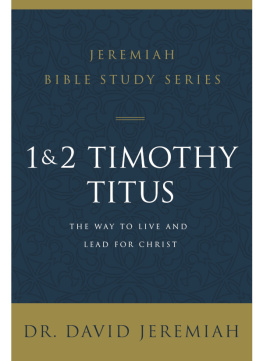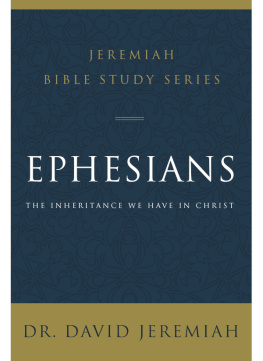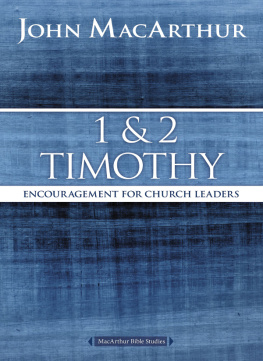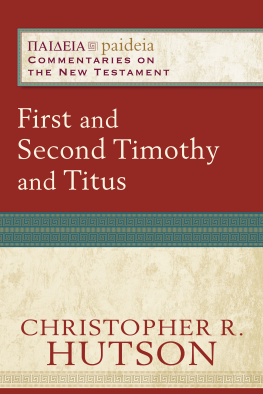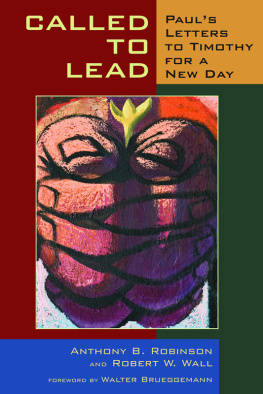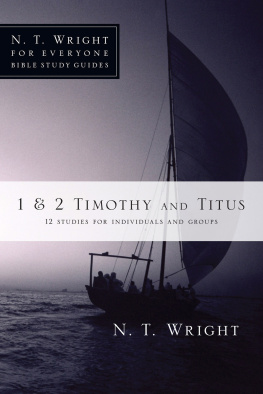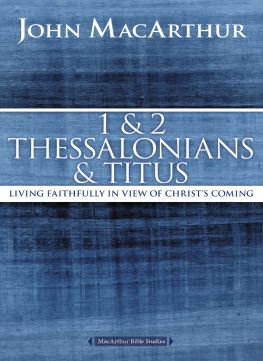David Jeremiah - 1 and 2 Timothy and Titus: The Way to Live and Lead for Christ
Here you can read online David Jeremiah - 1 and 2 Timothy and Titus: The Way to Live and Lead for Christ full text of the book (entire story) in english for free. Download pdf and epub, get meaning, cover and reviews about this ebook. year: 2020, publisher: HarperChristian Resources, genre: Religion. Description of the work, (preface) as well as reviews are available. Best literature library LitArk.com created for fans of good reading and offers a wide selection of genres:
Romance novel
Science fiction
Adventure
Detective
Science
History
Home and family
Prose
Art
Politics
Computer
Non-fiction
Religion
Business
Children
Humor
Choose a favorite category and find really read worthwhile books. Enjoy immersion in the world of imagination, feel the emotions of the characters or learn something new for yourself, make an fascinating discovery.
- Book:1 and 2 Timothy and Titus: The Way to Live and Lead for Christ
- Author:
- Publisher:HarperChristian Resources
- Genre:
- Year:2020
- Rating:3 / 5
- Favourites:Add to favourites
- Your mark:
1 and 2 Timothy and Titus: The Way to Live and Lead for Christ: summary, description and annotation
We offer to read an annotation, description, summary or preface (depends on what the author of the book "1 and 2 Timothy and Titus: The Way to Live and Lead for Christ" wrote himself). If you haven't found the necessary information about the book — write in the comments, we will try to find it.
Living by and for the Gospel...
Follow Dr. Jeremiah through the letters of1 and 2 Timothy and Titus in a chapter-by-chapter study that will help you understand whatit meant to the people at the time it was written, and what it means to Christians today.
The apostle Paul founded many churches in the Roman Empire, but it is clear he did not do this work alone. Rather, he relied on trusted companions such as Timothy and Titus to support the ongoing work in these communities.
As Paul neared the end of his life, he wrote personal letters to these men to encourage them in their ministry and provide final guidelines for how live and lead for Christ. In particular, we find him urging these men to maintain purity in the church, faithfully endure for the gospel, preach sound doctrine, pursue godliness, and maintain order as they built up other leaders. Pauls words compel believers today to also pursue their calling in the church . . . even when that means dealing with hardheaded and unruly fellow believers!
Each of this studys twelve lessons is clearly organized to include:
ABOUT THE SERIES
The Jeremiah Bible Study Series captures Dr. David Jeremiahs forty-plus years of commitment in teaching the Word of God. In each study, youll gain insights into the text, identify key stories and themes, and be challenged to apply the truths you uncover to your life. By the end of each study, youll come away with a clear and memorable understanding of that Bible book.
Each study also contains a Leaders Guide.
David Jeremiah: author's other books
Who wrote 1 and 2 Timothy and Titus: The Way to Live and Lead for Christ? Find out the surname, the name of the author of the book and a list of all author's works by series.

